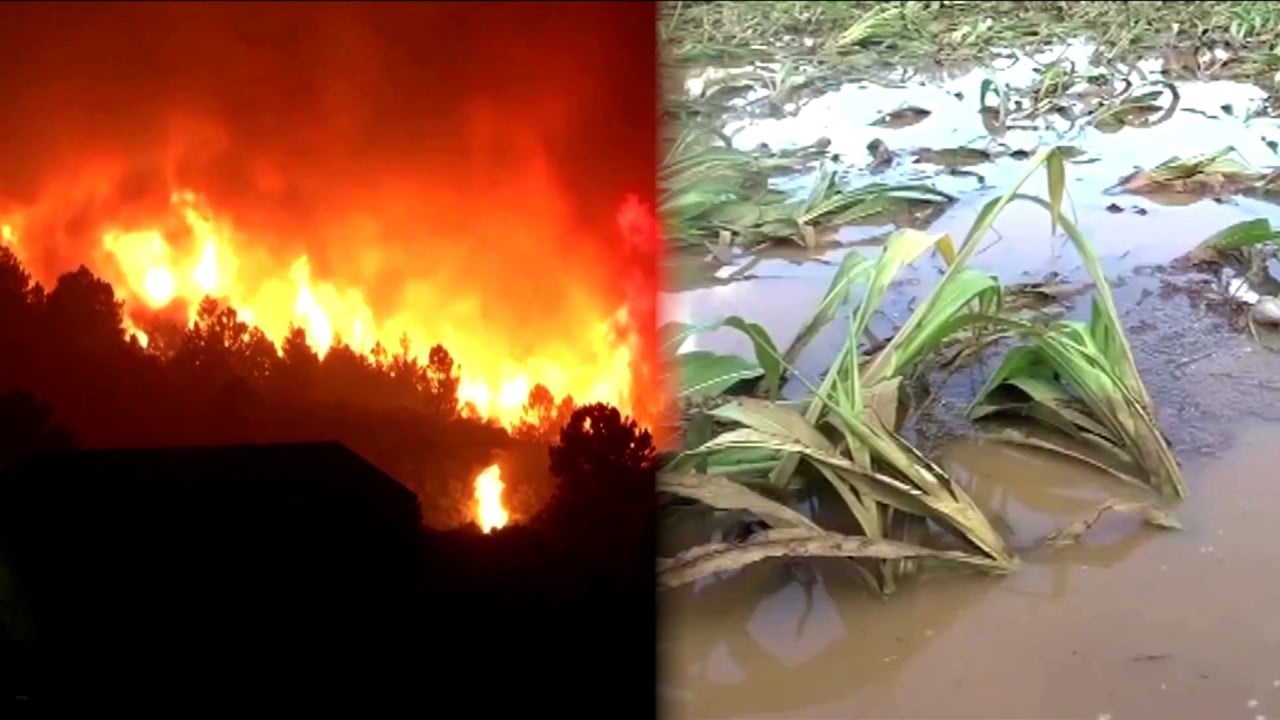
El Nino upsets India’s food supplies, threatening to send prices soaring: ‘prices will shoot up worldwide’
- Bad weather’s impact means India’s ban on wheat exports is unlikely to be lifted and it’s now considering halting rice shipments
- India’s bans could exacerbate food shortages at a time of tight global supply amid the Russia-Ukraine war as their grain deal’s July 18 expiry looms
Indian farmer Sandeep Babar has been scanning the skies in recent days for the heavy, black monsoon clouds that signal the start of the summer crop-planting season at his five-acre farm in the western state of Maharashtra, but the weather gods have so far disappointed him.
“We have not even had enough rain to cause a puddle on the roads or in our fields,” Babar said. “I am worried that the monsoon will be too late, and when it does come, there will be such an intense cloudburst that it will damage our crops when we sow them.”

Meanwhile, the disturbing weather pattern has engulfed the rest of Asia as well.
Rice prices in Asia surged to a two-year-high this week, as importers built up stockpiles on the back of fears that El Nino will damage crops. Thai white rice 5 per cent broken, a benchmark grade for the region, has risen about 15 per cent in the past four months to US$535 a tonne.
“If this year’s agricultural yields turn out to be drastically lower, import-dependent countries will indeed be faced with sourcing difficulties, increased commodity prices or both,” said Enver Yucesan, a professor of operations management at business school INSEAD.
“Depending on the severity of the heatwave, we may experience a 10-15 per cent reduction in average yields, inflicting hardships on farmers before affecting the consumers,” Yucesan said. “Any possibility of a supply disruption or shortage triggers export restrictions by these countries.”
Supply squeeze
Fears over the weather’s impact have pushed India, the world’s top rice supplier, to consider banning exports of most varieties of rice, except premium varieties of Basmati rice, according to a Bloomberg report on Thursday.
The move could light a fire under grain prices as the South Asian nation, which is the world’s second-biggest wheat producer, imposed a limit last month on the amount of the grain that traders can have on hold amid fears of a production shortfall.
The government previously estimated that wheat production would be a record 112.74 million tonnes this year, but actual output is likely to be 102-103 million tonnes as unusual temperature swings have affected the crop’s ripening, analysts say.
“Global warming is creating uncertainty. It could drive up food inflation,” said Biswajit Dhar, a distinguished professor at the Council for Social Development in New Delhi, noting that the government had not invoked stock limits since 2008.
Indian government agencies ended wheat purchases for buffer stock inventories earlier than usual this year – in May rather than June – indicating that traders may have cornered supplies already, according to Dhar. “Prices will shoot up worldwide, if India too falls short and has to import wheat,” he added.
The war’s fallout has already taken its toll, with the United Nations saying on Thursday that 2.4 billion people did not have constant access to food last year, with as many as 738 million people facing hunger due to shortages and reduced affordability.

Climate scientists say that this year’s extreme weather shows that every country is vulnerable and the world needs to expedite efforts to keep global warming in check.
“Agriculture is dependent on the availability of a conducive environment during all stages of crop development. Therefore, any shift from the optimum conditions such as untimely rains, extreme heat and flash floods will bring down the output,” said Mariam Zachariah, a research associate at Imperial College London’s Grantham Institute for Climate Change and the Environment.
The World Meteorological Organization has forecast that El Nino conditions – which occur every two to seven years – have a 90 per cent probability of continuing into the second half of this year.
It means uncertainty, not only for summer-sown staples like rice, but also for the harvest of wheat, oilseeds and vegetables. Prices of tomatoes and turmeric have soared over the summer.
Farmer Babar regrets that he is unable to plant turmeric due to fickle monsoon rains, as prices have shot up by nearly 50 per cent in three months to 12,000 rupees (US$145) per 100kg.
“It would have helped me pay back the steep loans that I took out to plant crops this season,” he said. “I will probably have to take on odd jobs now to pay them back.”



